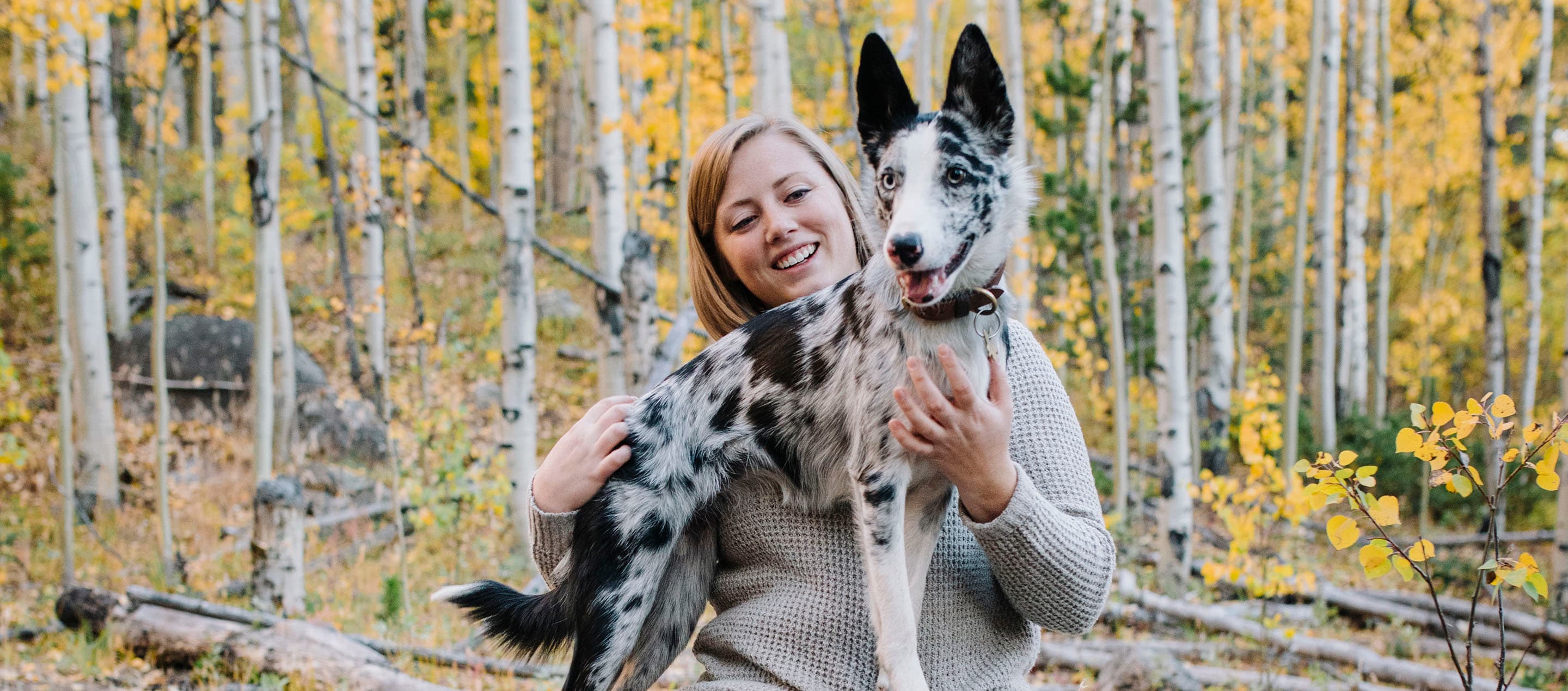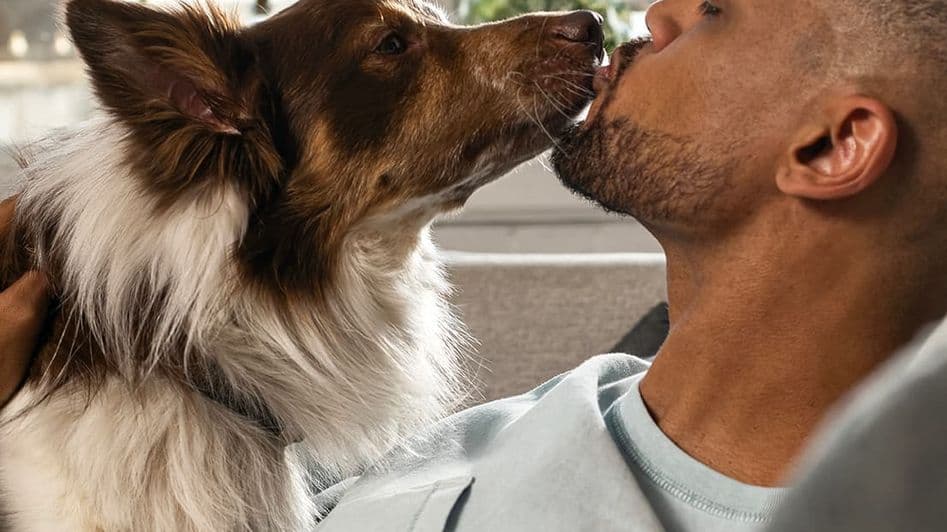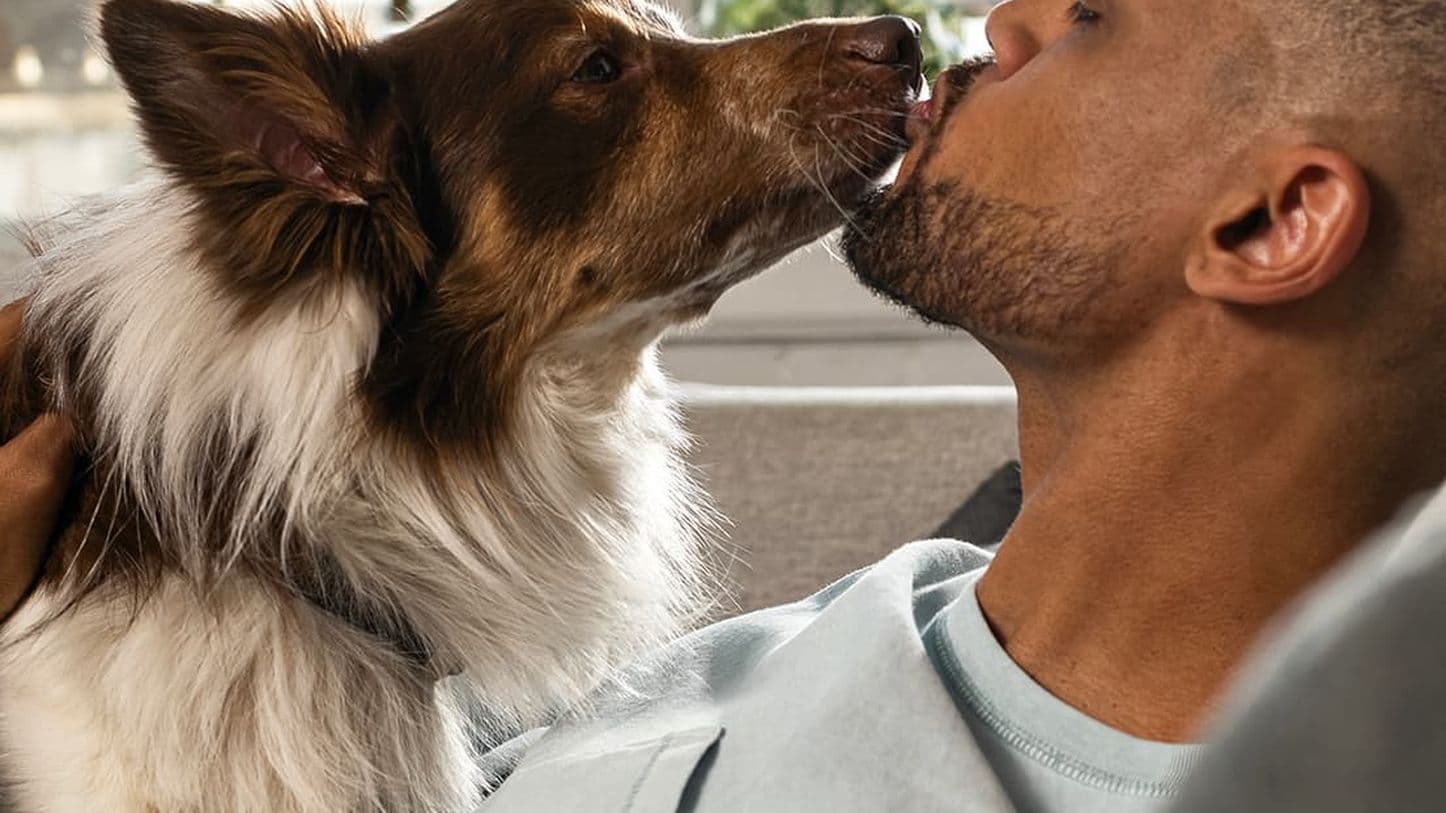
Tips
Master the 6 Basic Commands Every Dog Should Know: Tips for Training and Communicating with Your Canine Companion
8.29.2022
Whether you’re a first-time dog parent or just looking to brush up on your training skills, read on for everything you need to know about teaching your dog these important basics.
Sit
Stay
Down
Leave It
Come
Engagement
1) Sit
The Sit command is one of the most essential for your dog. A basic obedience cue, it’s also an important behavior to teach for safety reasons.
The Sit command is an important part of good pet etiquette when you are out and about with your dog. Sit is a behavior that can help your dog master impulse control in many scenarios, such as waiting calmly before going out the door or being fed. The best way to teach your dog to sit is through the use of positive reinforcement. This means rewarding your dog with treats, praise, or affection whenever they perform the desired behavior.
To start, show your pup that you have a treat. Let them sniff on it in your hand, and while you have their attention, slowly raise the treat over their head. As their head tilts back to follow the treat, their bottom will naturally lower into a sitting position. As their rear hits the ground, mark your “Sit” command, and reward them with the treat along with a “Good dog!” or “Yes!”.
If your dog doesn’t seem to be getting the hang of it, you can also try gently pushing down on their hind end as you raise the treat over their head.
2) Stay
The Stay command is another important cue and is very useful in situations where you need your dog to remain calm and stay put. It’s also a great behavior to work on for teaching impulse control around distractions. By teaching them to stay, you can help them learn to control themselves and look to you for direction in situations where they might otherwise be overly enthusiastic.
Your dog can be in any position when learning the Stay command, but some owners prefer to have their pup in a Sit or Down. Start by moving a couple of steps away from your dog for a few seconds, and use your command “Stay” while they are holding their position. If you want to incorporate a hand signal, you can hold your hand flat with your palm facing them.
If your dog remains in position until you return to them or release them, give them a treat and praise them for a job well done! If they get up and start to follow you, that’s fine. Calmly lead them back to the spot where they were sitting or lying down and repeat the process. If your dog is struggling to maintain a Stay, make it easier by releasing them quicker. If your dog will initially only stay for two seconds before they get too excited, release them after one second!
3) Down
The Down command can be beneficial when encouraging your pup to relax, but it’s also a foundational command that gets revisited when teaching various other skills. The Down command can also be helpful for repositioning your pup for veterinary or grooming scenarios.
If your dog already knows the Sit command, that makes teaching the Down command much easier — they’re already halfway there! Tell your dog to Sit, then let them sniff the treat in your hand. Once they’re interested, slowly lower the treat toward the ground. As your pup follows the treat with their nose, the front of its body will lower until their belly touches the ground.
Mark the Down command once your pup is completely on the ground, and use your “Yes!” or “Good dog!” If the treat lure isn’t enough on its own, place light pressure on your dog’s shoulders as you lure them toward the ground with the treat.
4) Leave It
If your pup is food-motivated or has a tendency to put things in their mouth, “Leave It” will help them resist the urge to pick up things that they shouldn’t — such as garbage, food off the ground, or even dangerous objects.
It’s also a great behavior to work on if your dog is prone to stealing things or begging for food at the table. To start, put your pup on a leash. This will give you more control if your dog tries to outsmart you when going for the treat. Stand with your dog in front of you, and drop a treat behind you. As your pup goes for the treat on the ground, say, “Leave it!” and block them from reaching it. You may have to dance around with your pup or walk into them to prevent them from snatching the snack off the floor.
Once your dog stops trying to get around you and can hold themselves back from temptation, give them a separate treat and say “Yes!” or “Good dog!”
5) Come
Come is one of the most important commands you can teach your dog. Not only is it a great way to recall them, but it can also be used in emergency situations to get their attention fast.
This command will help keep your dog safe by teaching them that coming when they’re called is a good thing. If each recall situation is positive, it can significantly improve your relationship with your pup and increase their desire to come to you. The key to teaching a solid recall is to make yourself more interesting and valuable than any distraction your pup is presented with.
Start by having your dog on a longer leash in a low distraction environment and quickly move a few feet away from them. You want your movement to be fast enough that your pup would have fun chasing you. As your dog is on the move and has almost reached you, use your “Come” command and reward them with a high-value treat once they’re right in front of you. Saying “Yes!” or “Good dog!” will also convey to your pup that they did the right thing.
If your dog needs extra guidance for this command, gently reel them in with the leash. You can also hold one of your dog’s favorite toys to give them more incentive to chase you.
6) Engagement
Engagement is where you teach your dog to check in with you via eye contact. Incorporating engagement into the cues you teach your pup will strengthen your bond, and in some scenarios, it can be a way for your pup to ask for permission for things. An example of this would be telling your dog to wait before passing through a door, but once they give you eye contact, you release them to pass through the door.
When you are first teaching your dog how important it is to check in with you in this way, you can mark it with a command, such as “Watch me” or “Look at me.” However, the ultimate goal is for your dog to understand the concept of regularly meeting your eyes to maintain communication with you — whether you explicitly tell them to or not.
Start by putting your dog on a leash. Show them you have a treat, but place the hand holding it behind your back. Most dogs will watch the treat until you put it behind you, then continue to stare at the place where their yummy snack disappeared. At this point, don’t give your dog any commands. Simply stand there and wait for your pup to make eye contact. Eventually, since you didn’t give your dog any hints about how to obtain the treat, your dog will look up to you for guidance.
Once you make eye contact with your dog, even for a second, say “Yes!” or “Good dog!” and give them the treat. Remember: for some dogs, it can take a while to connect the dots, so be patient.
It’s important to remember that patience is key when teaching your dog new commands. If your dog seems to be struggling with a particular command, try breaking it down into smaller steps or making the cue less complicated. It’s also a good idea to prepare some high-value, tasty treats your dog loves. Most dogs are motivated by food, which will help them stay focused and engaged during training sessions.
Finally, keep training sessions short, fun, and consistent, and you’ll be well on your way to teaching your dog some basic commands.
For more information on Vital Essentials and our full product line, follow us on TikTok and Instagram. And if you have any questions, be sure to check out our FAQ page for answers. Together, we can ensure your pet gets the proper nutrition they deserve.
Featured in this article:





